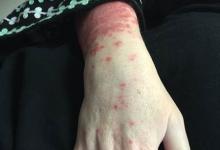A new mechanism of action in SARD-ILD Save

Nerandomilast, an inhibitor of phosphodiesterase 4B, orally administered, is a new mechanism of action to treat lung fibrotic diseases. FIBRONEER-ILD, the Phase 3 RCT of Nerandomilast in patients with progressive pulmonary fibrosis, was published in NEJM last month.
Out of 1176 patients randomized, 325 had autoimmune ILDs (RA 36.3%, systemic sclerosis 23.1%, and mixed connective tissue disease 14.5%). The results of the trail in this subpopulation was presented in LB003.
The trial was looking at 2 different doses of Nerandomilast (9mg and 18mg bd -called low and high doses- in this article) compared to a placebo arm. 1/3 of the patients were also taking Nintedanib.
The results are promising with Adjusted mean changes in FVC (mL) at week 52 of -107.1 in the placebo group, -61.2 in the low dose group and -64.9 in the high dose group. In addition, the composite outcome of time to first acute exacerbation of ILD, hospitalisation for respiratory cause, or death showed Hazard Ratios of 0.71 (ns) for low dose and 0.56 (95% CI: 0.33, 0.96) for high dose.
Safety profile was acceptable in this trial with serious adverse events in 39.0%, 33.0% and 39.8% of patients in placebo, low and high dose respectively.
I was curious to see whether the patients receiving Nerandomilast in combination with Nintedanib experienced more side effects and the authors reported that the incidence of adverse events that led to treatment discontinuation was generally similar among patients taking background nintedanib therapy and those who did not.
This newcomer in the field of SARD-ILD treatments is of particular interest. While at EULAR 2025, the EULAR/ERS diagnostic and therapeutic approach of interstitial lung disease in connective tissue diseases developed in collaboration between Rheumatologists and Respiratory Physicians were presented by Anna-Maria Hoffmann-Vold. Of interest, the recommendation suggested that patients with SSc-ILD with early diffuse SSc and signs of inflammation should be treated with tocilizumab and that patients with any IIM-ILD should be treated with immunosuppressive treatment (of which glucocorticoids, calcineurin inhibitors, rituximab, mycophenolate, or azathioprine). Individual algorithms for RA, SSc, Mixed CTD ILD etc have been also conditionally proposed by the task force. It would be interesting to see where Nerandomilast will be placed in these algorithms, and certainly to keep an eye on the post marketing surveillance studies. To be continued…










If you are a health practitioner, you may Login/Register to comment.
Due to the nature of these comment forums, only health practitioners are allowed to comment at this time.